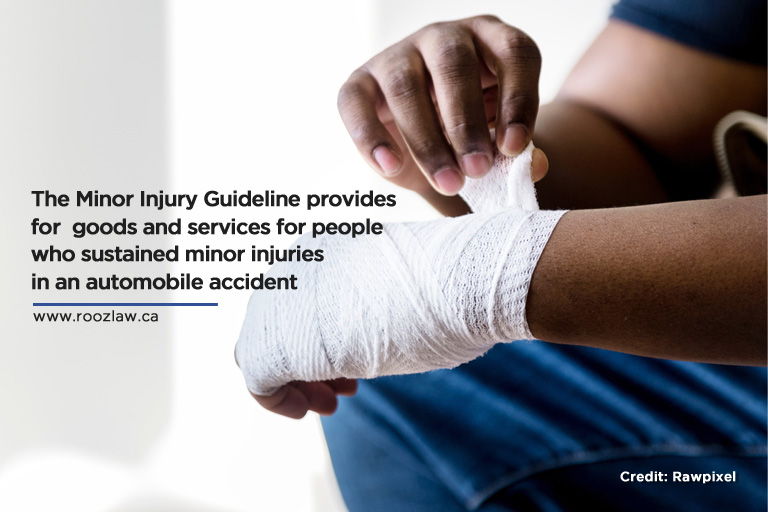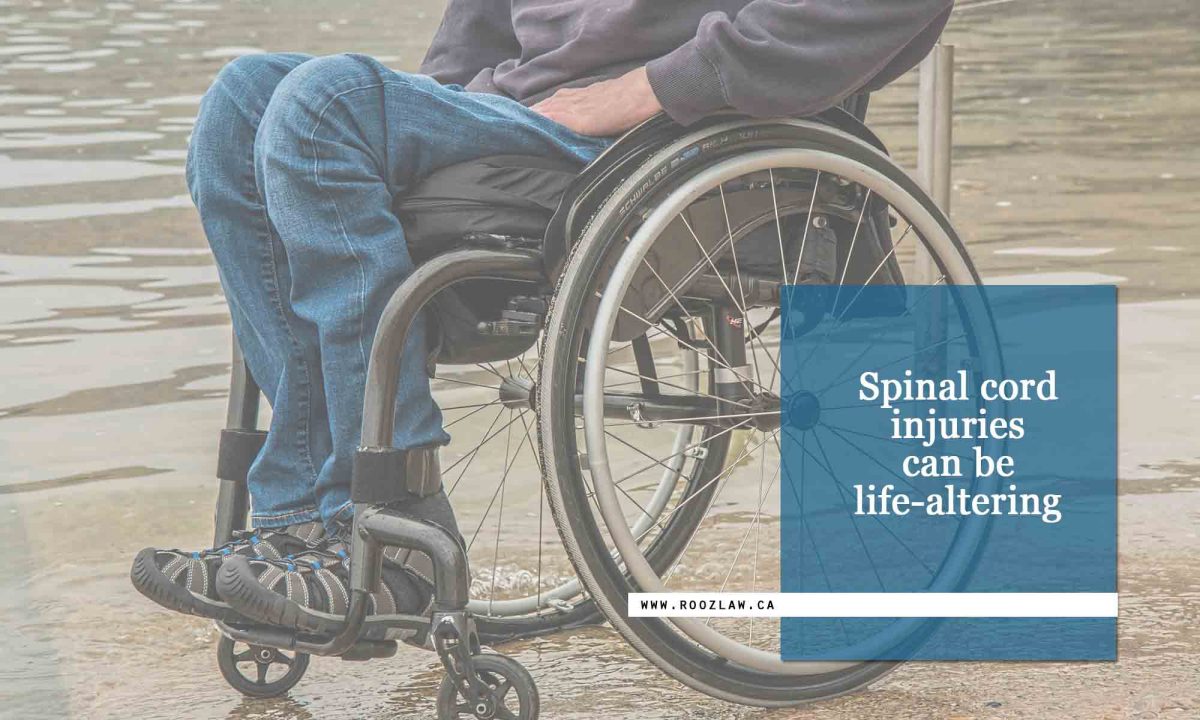The Minor Injury Guideline (MIG) is part of the Statutory Accident Benefits Schedule (SABS) and is in place to guide how accident victims are covered for goods and services by their insurers if their injuries fall within the definitions in the MIG. Treatment does not require the insurer’s approval for minor injuries sustained in an accident, if an application is properly made with respect to a motor vehicle accident. Although that might sound complicated, here’s what the MIG means to you.
The stated objectives of the MIG are as follows:
- Speedy access to rehabilitation for persons who sustain minor injuries in auto accidents;
- Improve the utilization of health care resources;
- Provide certainty around cost and payment for insurers and regulated health professionals; and
- Be more inclusive in providing immediate access to treatment without insurer approval for those persons with minor injuries
Insurance companies can substantially reduce the amount of money they pay out for a claim within the framework of the MIG. The MIG limits the amount that a victim can access to $2,200, or, with an extension, to an absolute maximum of $3,500. In some minor injury cases, this will be sufficient, but for many of people, this amount doesn’t go nearly far enough to pay for the treatment they need and to be able to function as they did before the accident.
What is Functional Restoration?
Since the MIG provides for goods and services with a functional restoration approach (getting the injured person to a state of health where they can function), there’s plenty of room for a subjective determination of what that might mean. It’s usually perceived differently by the sufferer, compared to the insurer. Regardless, the MIG limits the amount that can be used, and this in turn can limit the ability to fully recover.
The minor injuries defined by the MIG include:
- Sprain
- Strain
- Whiplash associated disorder
- Contusion
- Abrasion
- Laceration
- Subluxation (when a joint begins to dislocate)
- Clinically associated sequelae (this means an injury or other health complaints that arises as a result of the initial concern)
The Structure of Treatment
The MIG outlines a treatment course of 12 weeks (divided into three blocks of four weeks each). During each block health practitioners work with the injured person according to the guideline and oversee all interventions. They can also recommend supplementary treatment or certain therapeutic goods that will aid in recovery, such as ice packs, back supports, lumbar rolls, etc. These are also potentially covered by the insurer, but this amount is included in the $3500 cap.
It’s also important to note that if a person has extended health benefits privately or through their employer, these are to be accessed first, thus depleting a person’s extended health benefits for the year. The good news is that the amount paid by such extended health benefits is not deducted from a person’s MIG allowable amount of $3500.
Finding Compelling Evidence for Removal
Personal injury lawyers are concerned about the MIG’s limited amount available for optimal recovery, and the difficulty people face arguing that their injuries fall outside of the guideline. In order for a victim to claim higher benefits, they must prove that their injuries are beyond the minor classification, or that a pre-existing condition precludes them from for the limits of the MIG. The guideline makes it clear that most pre-existing conditions will not exclude victims from the MIG:
“Compelling evidence is to be provided using the Treatment and Assessment Plan (OCF-18) with attached medical documentation, if any, prepared by a health practitioner.
The existence of any pre-existing condition will not automatically exclude a person’s impairment from this Guideline. It is intended and expected that the vast majority of pre-existing conditions will not do so.” (From the Minor Injury Guideline, Financial Services Commission of Ontario)
The phrase “compelling evidence” is problematic here because of its subjectivity and requires healthcare providers to predict recovery based on pre-existing conditions. These are further complicated by what the MIG and insurance companies would call “minor injuries.” Arguing that an accident victim’s injuries fall outside of the MIG is difficult. Yet for those who are injured more severely, the difference between accessing a maximum of $3500 and being able to access up to $65,000 in a non-MIG claim is significant.
The biggest concern is that an accident victim’s injuries may be labelled “minor” in an effort for insurance companies to keep payments low, and that the result for the individual will be a lifetime of chronic pain and suffering as a result of inadequate treatment. While it may be true that the majority “of persons injured in car accidents in Ontario sustain minor injuries for which the goods and services provided under the MIG are appropriate,” it’s just not always the case, and there’s further concern that there’s room for judicial interpretation in some of the broader definitions.
The MIG and Psychology
On a positive note, since the MIG was written, there was some movement by insurers and adjudicators towards accepting psychological impairments as a qualification for receiving treatment outside the limits of the MIG. There is no mention of psychological injuries in the MIG and many people involved in accidents who suffer whiplash are able to be removed from the MIG if they suffer from psychological issues as well.
There may be are other types of injuries that “help” one get outside the MIG. Doctors are able to identify and diagnose concussions better today than they were five years ago, and this can be good news for victims of car accidents trying to get out of the MIG. Concussions are essentially a type of head injury and can take years to heal. The long-term repercussions of concussion are really just beginning to be fully understood. Nonetheless, head injuries and concussions may be used as a trigger to get one out of the MIG as well.
Despite these, victims still need to prove that their case falls outside of the MIG. This is where having a personal injury lawyer on your side can be of enormous help. Your lawyer can present proper evidence (such as reports, medical records, and more) to establish that your injuries are anything but minor. This will allow you to access benefits that will help you recover, return to work, and/or live life in the manner to which you are accustomed as well as help get you the compensation you deserve.
Talk to a personal injury lawyer who understands the law and knows how to help you get the financial support you need to recover from injuries sustained in an accident. Call Rooz Law Professional Corporation, Personal Injury Lawyers in North York and serving the Greater Toronto Area and Southern Ontario: (416) 229-6000.






